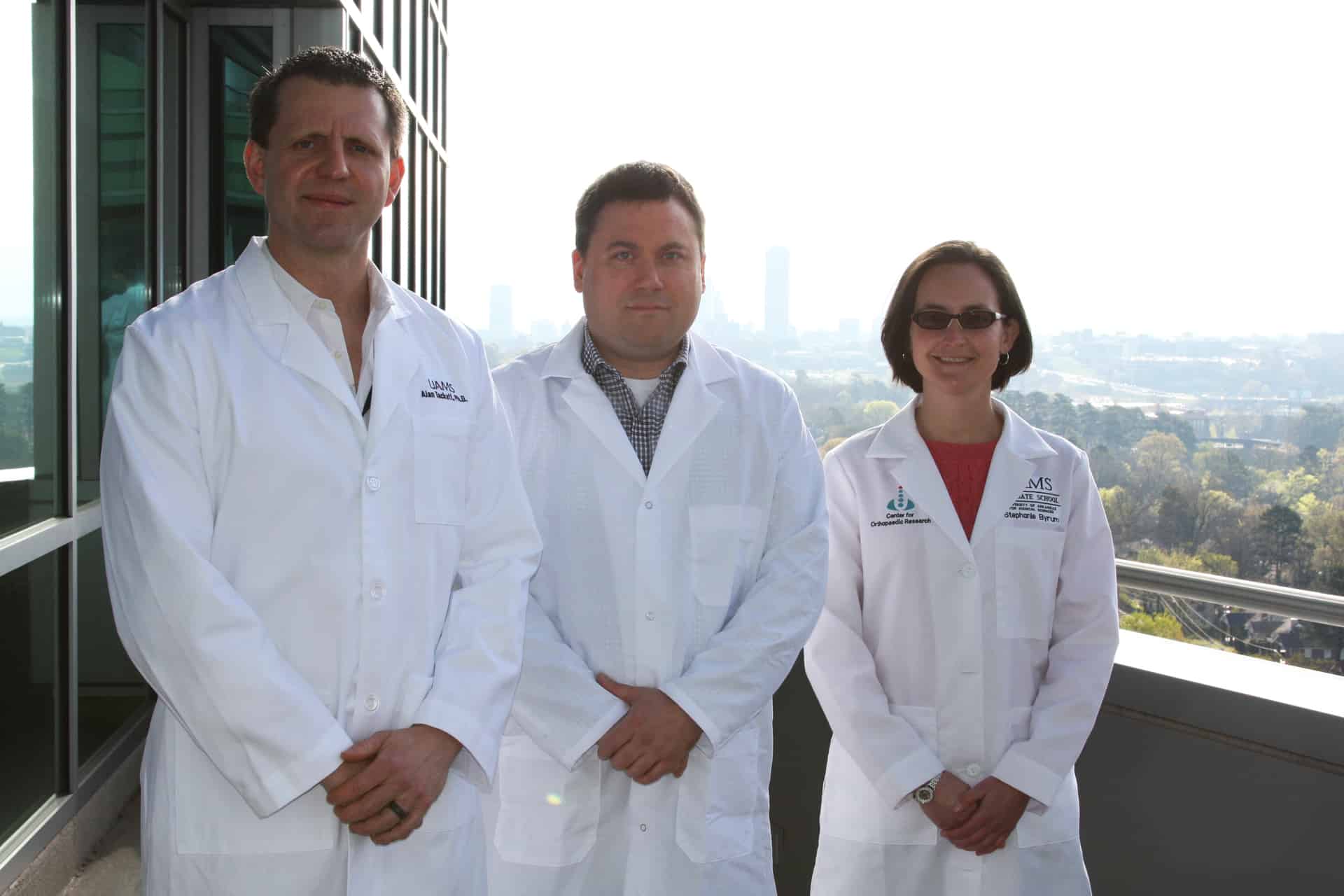UAMS Researchers Help Uncover Possible Sex Determinant in Mammals
| March 30, 2016 | A group of researchers at the University of Arkansas for Medical Sciences (UAMS) helped discover a new molecular “earmark” on DNA that may determine the sex of all mammals. The sex of human and all mammalian babies may be determined by a simple earmarking of an ancient virus that inserted itself into the mammalian genome as recently as 1.5 million years ago.
UAMS biochemist Alan Tackett, Ph.D., professor of Biochemistry and Molecular Biology in the College of Medicine, led a team of researchers that worked with scientists at Yale University to uncover the earmark, N6-methyladenine, which was found to regulate access to DNA on the X-chromosome, which ultimately determines the sex of mammals.
If the level of this molecular earmark is normal, X chromosomes remain active and females and males will be born at an equal ratio. If this earmark is overrepresented, X chromosomes will be silenced and males will be born twice as often as females.
The work, “DNA Methylation on N6-adenine in mammalian embryonic stem cells,” was published online March 30 by Nature. It was led by Andrew Xiao, Ph.D., at Yale University.
Discovering new cellular mechanisms that lock and unlock access to DNA will uncover new targets for therapeutic development for cancer and other diseases, which can have incredible impacts on health care, said Tackett.
Until this research, there was only one known molecular earmark on mammalian DNA.
“The discovery of this new molecular earmark and how it is unlocked to provide access to DNA is groundbreaking as it challenges the longtime belief that 5-methycytosine is the only DNA earmark regulating access to the genetic information of life,” said Tackett. “As we find more earmarks, we will better understand how access to DNA is locked and opened for normal cell growth, as well as during abnormal growth in diseases.”
To uncover how the level of this earmark is regulated, Tackett and his colleagues, assistant professors Stephanie Byrum, Ph.D., and Samuel Mackintosh, Ph.D., used proteomics, a highly specialized and cutting-edge technique used to analyze proteins at the level of atoms. Tackett, who serves as director of the UAMS Proteomics Facility, is world-renowned for these types of proteomic studies.
“Our team’s expertise in this specialized technology has allowed us to interact with the top laboratories and scientists in the world for investigations such as this one published in Nature,” said Tackett. “It establishes UAMS as a major player in the field of proteomics and continues to create unique opportunities to be a part of cutting-edge research for us and other investigators on our campus.”
The UAMS Proteomics Facility has been supported by UAMS’ Winthrop P. Rockefeller Cancer Institute, Translational Research Institute, and Arkansas IDeA Network of Biomedical Research Excellence (INBRE) as well as the Arkansas Biosciences Institute, which was established with the state’s tobacco settlement funds to identify causes and new treatments for tobacco-related diseases such as cancer. It receives funding through National Institutes of Health.
UAMS is the state’s only health sciences university, with colleges of Medicine, Nursing, Pharmacy, Health Professions and Public Health; a graduate school; a hospital; a main campus in Little Rock; a Northwest Arkansas regional campus in Fayetteville; a statewide network of regional campuses; and eight institutes: the Winthrop P. Rockefeller Cancer Institute, Jackson T. Stephens Spine & Neurosciences Institute, Harvey & Bernice Jones Eye Institute, Psychiatric Research Institute, Donald W. Reynolds Institute on Aging, Translational Research Institute, Institute for Digital Health & Innovation and the Institute for Community Health Innovation. UAMS includes UAMS Health, a statewide health system that encompasses all of UAMS’ clinical enterprise. UAMS is the only adult Level 1 trauma center in the state. UAMS has 3,275 students, 890 medical residents and fellows, and five dental residents. It is the state’s largest public employer with more than 12,000 employees, including 1,200 physicians who provide care to patients at UAMS, its regional campuses, Arkansas Children’s, the VA Medical Center and Baptist Health. Visit www.uams.edu or uamshealth.com. Find us on Facebook, X (formerly Twitter), YouTube or Instagram.###
